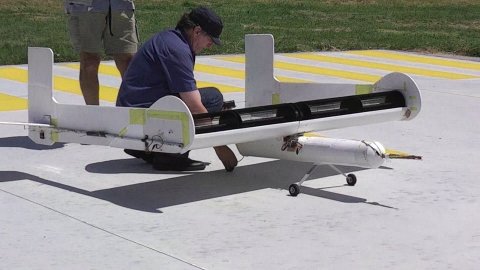
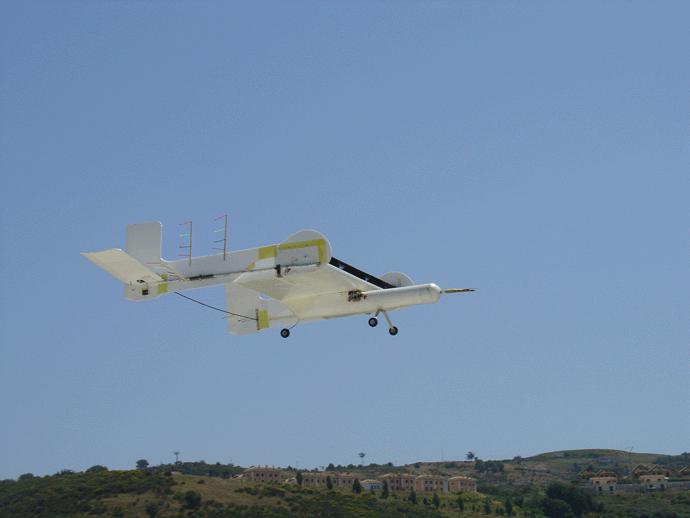
| FANWING | |
|
prototype UAV airframes
2011- 2014 FanWing OHS Twin-Tail: A new twin-tail Outboard Horizontal Stabilizer (OHS) configuration has now been successfully flight tested by Pat Peebles and pilot Raffaele Moreschini with resulting improvements in both efficiency and stability. Exploiting the updraft from the wing tip (as geese do in their V formation flight), the radical change in design was based on a suggestion by former Principal Concepts Engineer for BAe, George Seyfang. Figures calculated from onboard logging demonstrate an increase in lift efficiency of between 10 and 15%.
OHS test flights
 |
|
|
|
|
|
|
|
December 2009 600 kg UAV: projected images for short-haul cargo
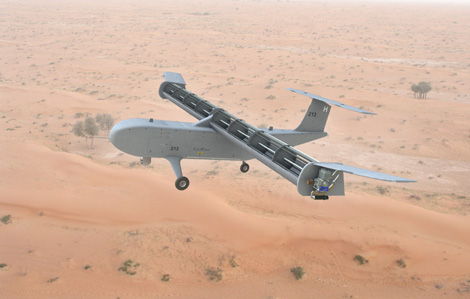
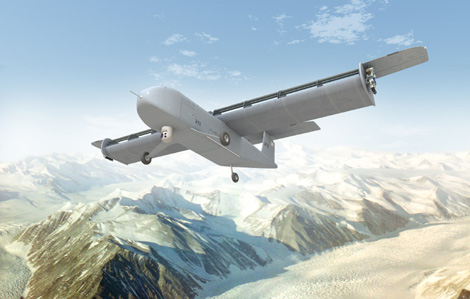

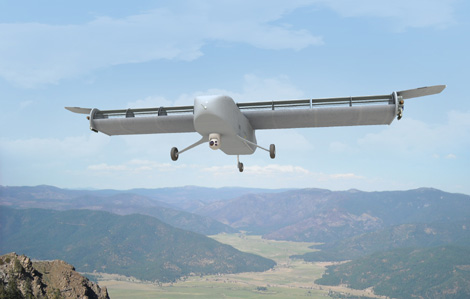
Artwork by Adrian Mann
Preliminary specifications
|
Empty weight |
300 kg |
|
MTOW |
600 kg |
|
Span |
10 m |
|
Wing loading |
60 kg/m2 |
|
Rotor span |
8 m |
|
Rotor diameter |
50 cm |
|
Engines |
2 X 40 hp |
|
Flight speed |
40 kt IAS (60 at 6000 m) |
|
System efficiency |
25 g/w at flying speed |
2008/9 Surveillance
|
Dry weight 6 kg MTOW 12 kg Rotor span 1.6 m Flight speed 8 - 15 m/sec Engine electric 1.2 kW Construction composite Autonomy 80 minutes (design goal) Payload 2 kg |
|
|
|
|
|
|
Flight video from ParcAberporth 2008 |
2002-2004 SMART-Murch prototype modified with a 35 cc Honda engine
|
|
|
|
See specifications of this prototype below |
Slightly reduced lift on this test but lower sound |
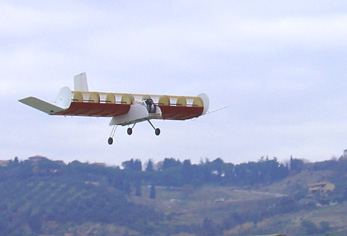
35 cc 4 cycle gasoline engine confirming fuel consumption @ 500g per hour Video clips 8.5 mb
Short video clips from same flight (5 mb)
|
FanWing UAV Prototype (with pilot Raffaele Moreschini) |
Test flight with suspended lead payload (10kg) |
FanWing UAV Prototype Development
The Murch/SMART UK government co-funded UAV model is now flying under RC control and engaged in ongoing weight tests, still open ended but with present payload now at 12kg.
It is clear that the new FanWing technology lift efficiency improves with upscaling. The company are keen to exploit the possibilities with a larger prototype which will not only act as a high-lift commercial UAV airframe but also provide essential research data for the future manned ultralight.
Achieved and Projected Milestones
First (SMART) Phase (completed end of 2003): production of a viable long-endurance (> 8 hours) slow-flying manoeuvrable surveillance airframe.
Second Phase: ongoing payload flight tests with onboard surveillance equipment
Projected Third Phase: construction of a new prototype airframe to carry 60 kg of useful payload, with a flight duration of 12 hours controlled by an autonomous flight-control computer.
Specifications of First/Second Phase UAV Prototype
| Empty weight
MTOW Rotor span Engine Flight speed Take off distance @ 18 Kg Autonomy* |
8 kg 20 kg 2.2 m 11.5 cc glow engine 7-15 m/sec 20 m To be determined* |
*A new engine will be installed shortly which will use approximately 500 g. of fuel per hour providing 8 hours of autonomy with 4 kg in fuel, leaving 6 kg for electronic payload.
Early UAV Prototype Flight Clips (October 2003) with first experiments in surveillance
Preliminary Specifications for Projected Third Phase UAV
|
Empty weight MTOW Rotor Span Engine Flight speed Loiter speed Onboard generator Flight control system |
80 kg 200 kg 7 m UEL 741 engine 25 m/sec 12 m/Sec 3 kW To be determined |